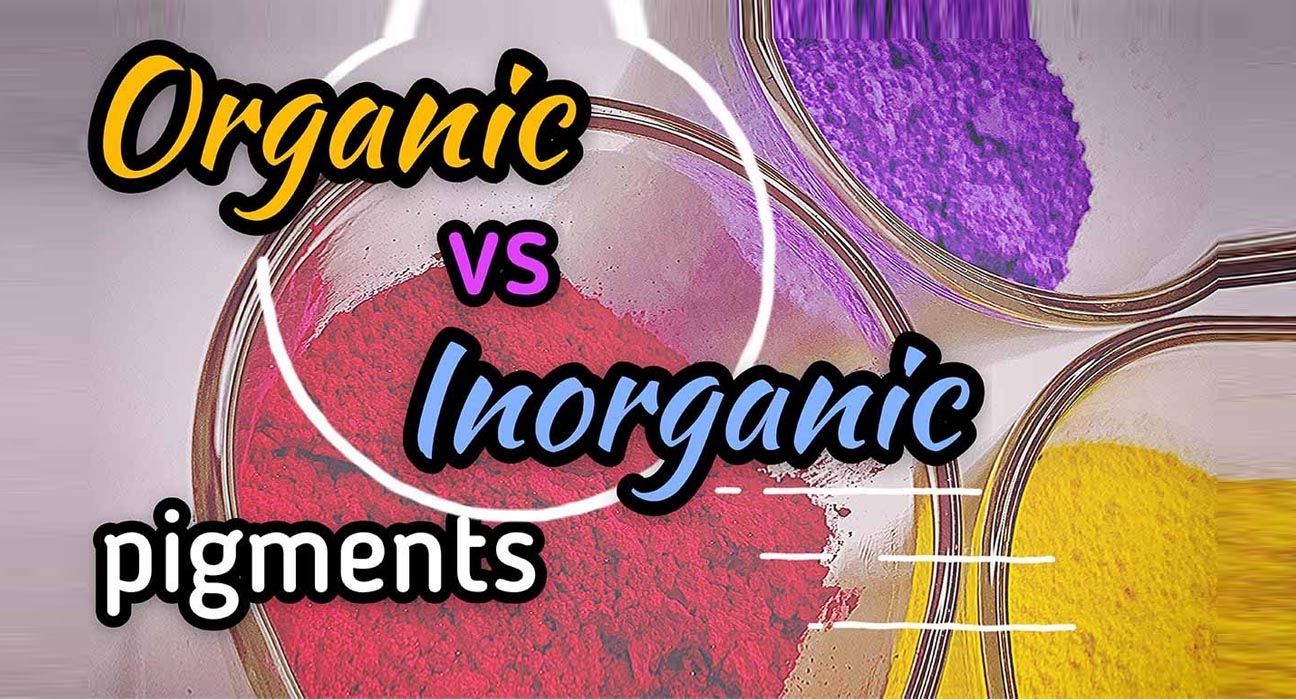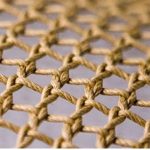organic vs inorganic pigments. The key difference between organic pigments and inorganic pigments is that organic pigments are made of carbon chains and ring structures and are expensive comparatively, whereas inorganic pigments are made of minerals and are comparatively cheap.
A table is given below showing the differences;
Organic VS Inorganic Pigments
| Parameters | Inorganic Pigments | Organic Pigments |
| Source | Minerals | Chemically refined oil |
| Color | Often dull | Bright |
| Dyeing / Coloring Strength | Low | High |
| Opacity | Opaque | Transparent |
| Light fastness | Very good | Vary from poor to good |
| Solubility | Insoluble in solvents | Have little degree of solubility |
| Degree of safety | May be unsafe | Usually safe |
| Chemical Stability | Often sensitive | Usually good |
| Cost | Moderate | Mostly too expensive |
Organic VS Inorganic Pigments
ORGANIC PIGMENTS
Organic pigments are based on carbon chains and rings. While some contain inorganic elements as stabilizers, organic pigments are defined primarily by this factor. These strong carbon chains also make them highly stable.
Carbon-based pigments are derived from animals, vegetables, or synthetic organic chemistry. While traditional pigments were typically created using flora and fauna, the majority of modern pigments are created through synthetic organic chemistry. Synthetic organic pigments are most commonly derived from aromatic hydrocarbons including coal tars and other petrochemicals.
Organic pigments are marked by the following qualities:
- Color quality: While most organic pigments are considered transparent, their tonality is unparallelled. Organic pigments are characterized by bright, rich colors. They often provide powerful tint strength despite their transparency.
- High prices: Organic pigments tend to be more expensive to produce, especially
synthetic organic pigments. Synthetic pigments require a great deal of chemical
processing to produce, increasing the cost by volume.
- Varying lightfastness: There are many different varieties of organic pigments, but most of them tend to hold up poorly when exposed to light. While some can resist light and heat exposure well, many will fade over time.
Organic pigments tend to be less popular in most industries compared to inorganic pigments, with the exception of artists’ paints. However, organic pigments are frequently used on a lesser scale in combination with inorganic pigments as this method improves the color quality of a product.
Organic VS Inorganic Pigments
INORGANIC PIGMENTS
Inorganic pigments are not based on carbon chains and rings. Instead, they consist of dry ground minerals, usually metals and metallic salts.
Because of their composition, inorganic pigments are usually more opaque and more insoluble than organic pigments. In general, inorganic pigments are the most commonly used in industry, favored for their lightfastness and low cost.
Inorganic pigments tend to be a popular choice in the industry for numerous reasons, but they do have their drawbacks. Some of the most significant positive and negative properties of inorganic pigments are:
- Excellent fade resistance: One benefit of inorganic pigments is their excellent
resistance to fading when exposed to light. They also tend to be more resistant to fading when exposed to open air and heat.
- Cost-effective: Inorganic pigments tend to be cheaper to produce, especially in the large quantities needed for industrial applications. Much of this is due to the relatively simple chemical reactions needed to produce inorganic pigments.
- Poor tonality: While inorganic pigments tend to retain their color well, the color they produce by themselves is often dull. Improving tonality and brightness is often only possible when mixing inorganic pigments with organic pigments or dyes.
- Toxicity: Inorganic pigments tend to be more harmful to the environment due to the presence of lead salts in their composition. Some are even outright toxic, such as
lead-based pigments.





